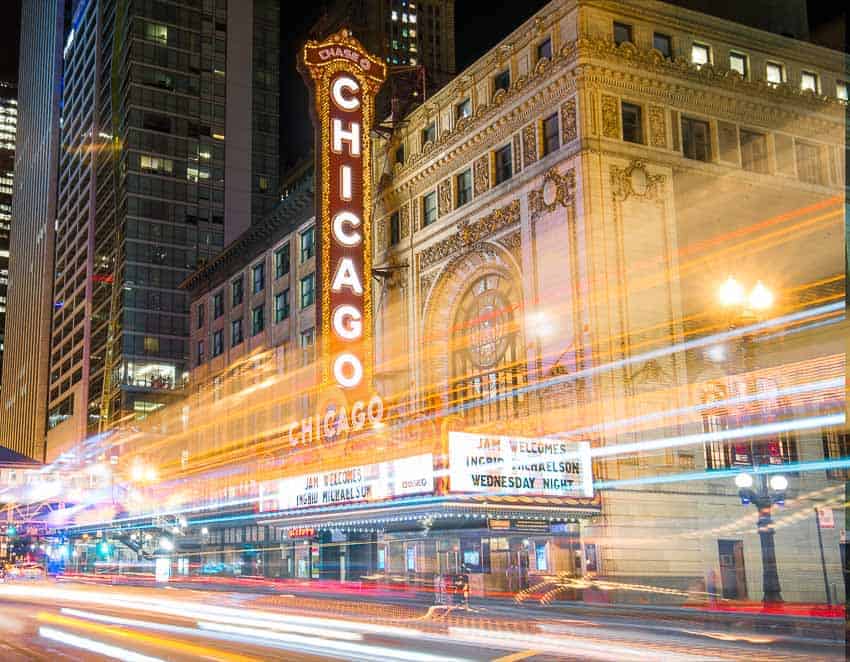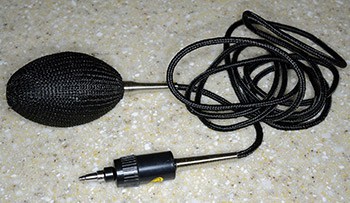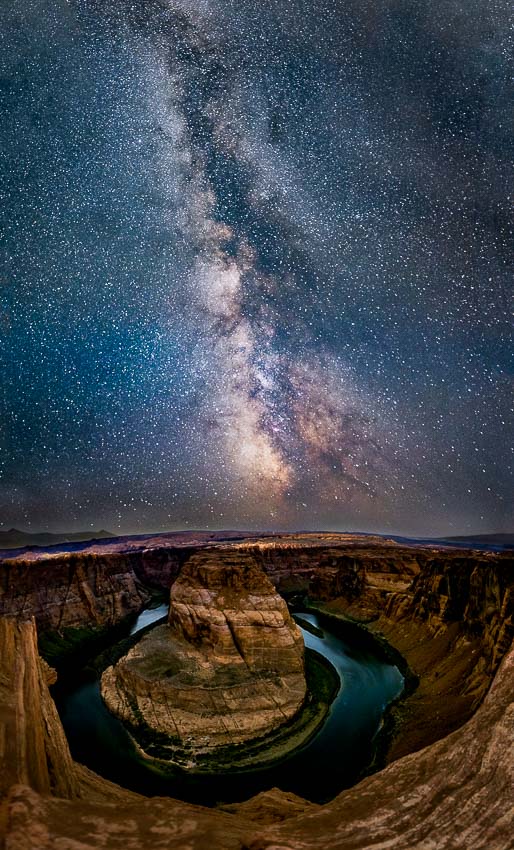Today's post is the result of a question from Eric Thant, who asked “How do I shoot the bulb mode?”
What Is Bulb Mode on a Camera?
Bulb mode simply allows the photographer to take a picture for as long as the shutter is depressed (that means pushed down, not sad…). You can use bulb mode by choosing manual mode or shutter priority, then start scrolling your selector wheel all the way to the end of the shutter speeds. After 25″ (25 seconds), 30″, it will show “bulb” or simply the letter “b” on some cameras. Now you're in bulb mode. This means the camera will keep taking a picture until your finger comes off the shutter button.
Bulb mode is mostly used for long exposures at night. The main advantage is that it allows the photographer to achieve shutter speeds longer than the 30 seconds (displayed 30″ on the camera) that is allowed on most DSLRs.
No one in their right mind would stand next to the camera with their finger pressing down the shutter button for an ultra long exposure. Bulb mode is usually used in conjunction with a cable release. You can pick up a cable release for about $10 for most DSLRs on Amazon. It is simply a wired remote control that allows the photographer to lock the shutter button to take LONG exposures without actually standing there and holding the button down.


Why Is It Called “Bulb”?
On the old school cameras, there was a pneumatic valve bulb that was used as a cable release for the camera. It looked somewhat similar to the little pump on a blood pressure cuff.
It worked by sending a blast of air from the bulb. As long as the bulb was pressed, the shutter would stay open. When the bulb was released, the shutter would close.
Nowadays, cable releases work differently. It would be a real pain to have to stand out in the cold all night holding down a bulb for the shutter to stay open, so modern cable releases have a “lock” function that allows the photographer to press the button that starts the bulb exposure and then lock it for as long as you want. When you're ready to stop the exposure, you simply slide off the lock and the shutter ends.
4 Situations Where Bulb Mode Rocks!
Bulb Mode Idea #1: Taking pictures of lightning. Bulb is great for shooting lightning because it allows the photographer to stop the exposure when needed based on changing conditions, without being locked into a 30 second exposure. When I shoot lightning, I set up the camera on a tripod, set the DSLR to bulb mode, plug in my shutter release, and start an exposure. The camera keeps taking a picture as I watch the lightning and imagine how the different lightning bolts will appear on the final image. Once the picture in my head of the different strikes looks about right, I stop the exposure. This way I can end right after the last lightning bolt instead of waiting around for the 30 seconds to end and hoping another bolt doesn't strike in the same place as another one did.
Bulb Mode Tip #2: Star trails. Shooting star trails is really fun. Since the Earth rotates, the stars change their position in the sky. By using bulb mode and an exposure of 20 minutes or more, you can capture beautiful star trails at night. The stars look like they are all streaking falling stars.
Bulb Mode Situation #3: Light Painting. Light painting is when a photographer sets the camera on bulb mode and then paints light with flashlights on the subject in a dark location. For more on this technique, check out my night photography book or read this old post.
Bulb Mode Tip #4: Shooting fireworks. For the same reasons as for shooting lightning, it's nice to be able to control when the picture will stop.
How to Get a Cable Release For Your Camera, so You Can Use Bulb Mode
The good news is that cable releases are usually quite inexpensive. They usually cost less than $30. However, you have to get the right cable release for your specific camera. They are not universal.
The best way to find one is to go to Amazon and simply search the model of your camera and the word “cable release.” You'll see that the Canon, Nikon, Fuji, or other name brand releases typically cost more. In my experience, they are NOT worth the money. A cable release is a very simple device, so just get the cheapest one that has decent reviews.


Thank you so much. Very informative.
When I use bulb mode on my Canon 600D it seems to go over 30 seconds, however it seems to stop at about 1minute but immediately starts a new photo, when i looked on my photos there were about 4 photos where the exposure was only about 1 minute as i held it down for about 4 minutes, is there a way to stop this and let it have the shutter open for as long as i am pressing the shutter down?
Thanks
Seems like every time I try and do an exposure longer than 30 seconds its always over exposed, Im not in a heavy light polluted area but there is still some. Do I need to stop down my lens, I usually shoot at f2.8. would really love a tutorial about shooting in bulb mode.
use the small no. of aperture
I have a good tip is this … for night photography I usually set the fstop to whats required in terms of DOF say between f5.6 and f11 and I usually aim for ISO100 for my final exposure to keep to absolute minimum noise, so bearing in mind and considering long exposures could be anywhere from 30 seconds or 6 hours, how can you quickly get a decent idea of the final exposure?
Obviously you can’t just do a test for a 6 hour exposure every time … so here is a quick dirty tip, set the iso to 6400 …
Why? well ISO6400 as its roughly iso100 x 60, so a 1 second exposure at ISO6400 is almost the same as a 1 minute exposure at ISO100.
That means you can do some very quick exposure tests …
1 second at 6400 = roughly 1 Minute at ISO100
2 seconds at 6400 = roughly 2 Minutes at ISO100
3 seconds at 6400 = roughly 3 Minutes at ISO100
10 seconds at 6400 = roughly 10 Minutes at ISO100
30 seconds at 6400 = roughly 30 Minutes at ISO100
1 minute at 6400 = roughly 1 hour at ISO100
5 minute at 6400 = roughly 5 hours at ISO100
So within a few minutes you can narrow down your final shutter speed safe in the knowledge you wont be too far out.
Dear Jared. Try to use higher f-stops , however bear in mind that for all lenses the picture quality gets really bad from f11+ , so another way is to use filters. Hope this helps.
nice tips .I will apply it today onwards
Thanks for sharing this valuable post of photography log exposure night..!!
What would you say a good time frame is for a good photograph of stars? Not the trails. But just a nice picture of stars.
Thanks for the informative post. Hope it will help me improve my photography skills.
nice tips .I will apply it today onwards
Very Nice information. Thanks for the article
Wow definitely wanna try the star trial with long exposure. thanks for the info.
great site you have have
I read a blog recently about taking photos of meteor streaks during a shower. The photographer set the lock on the remote but set the exposure time on his camera to 15 sec. He says that this caused the camera to continuously take 15 sec exposures for about two hours (when the camera battery finally died). Have you ever tried this? I was surprised that it worked and in fact a remote of my own creation does not duplicate these results. I set mine to bulb mode for 100 sec and the camera exposure time to 5 sec and it takes only one exposure. I am wondering why his works and mine doesn’t. My camera is a 5DMII and he was using a 6D. I guess I’ll just have to order a remote like his and try it.
can i use ND filter in bulb mode and what would be the effect?
yes, it’s awesome… you c an take time exposures in bright daylight… getting motion blur on trees blowing in the wind… on waves on water … and crowds in pubic places simply disappear making it look like a ghost town :o)
you can find it easut
My I use ND filter in this mode please suggest how it will be.
Thanks for sharing this valuable post. Very interesting post on long exposure, i’m interested in photography but not have much knowledge. Your post helps me a lot.
I am dumb In photography….Bulb Mode It Was My First Time To About It.
excellent information given here. like others i will put bulb mode to practice . thanks again..
Bulb mode shutter on the Nex 5 that I used to have would automatically stay open until sufficient light had been accumulated for a properly exposed picture. Alas, I was appalled to find that my new camera won’t do this, because it leaves me guessing… just how long will it need?!
Please do you have any tips on what could be a good camera for bulb mode?